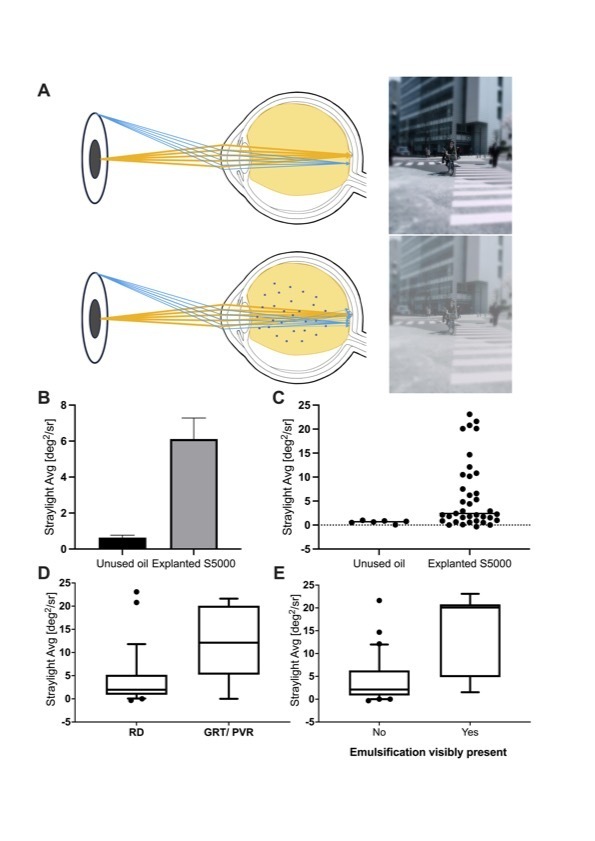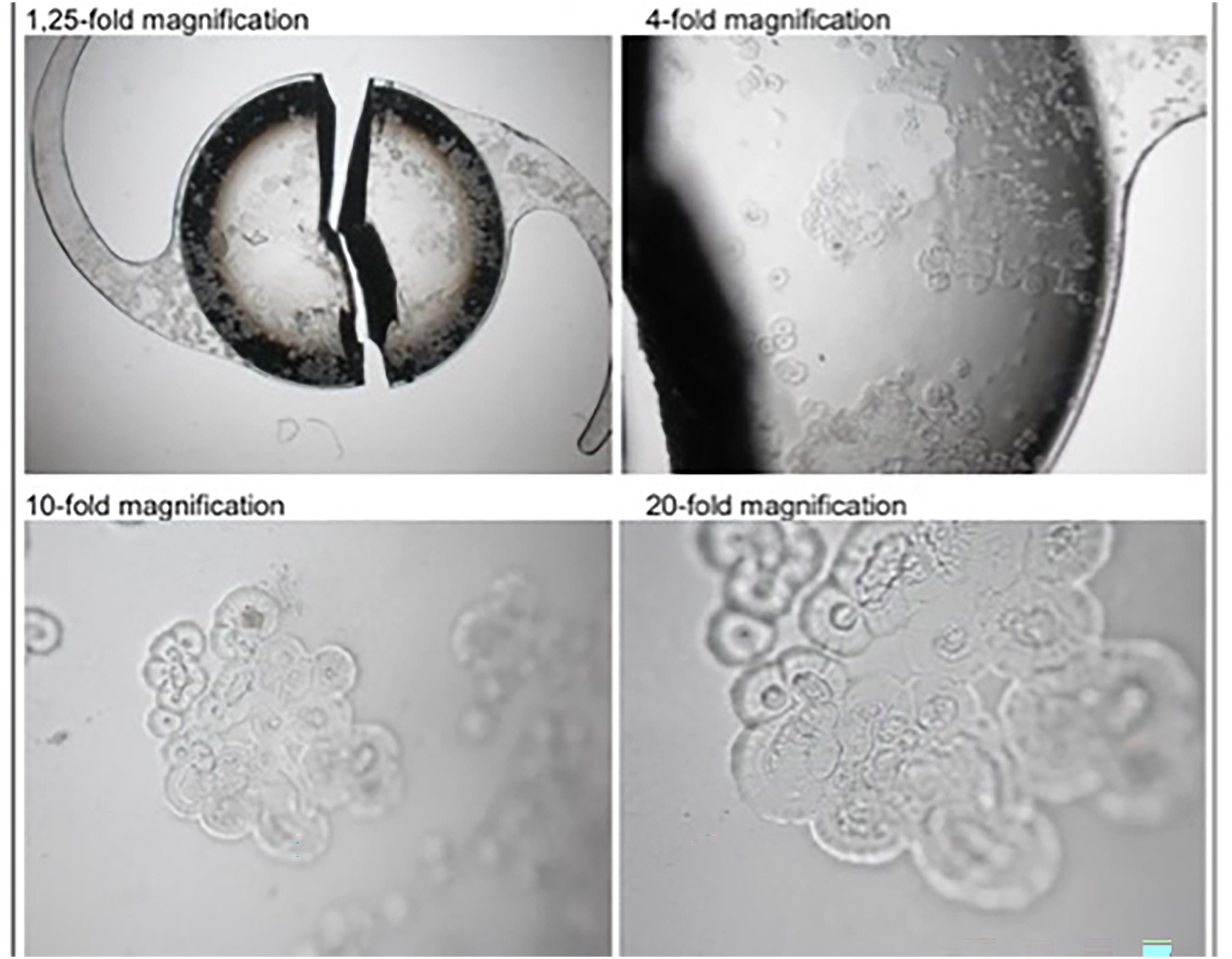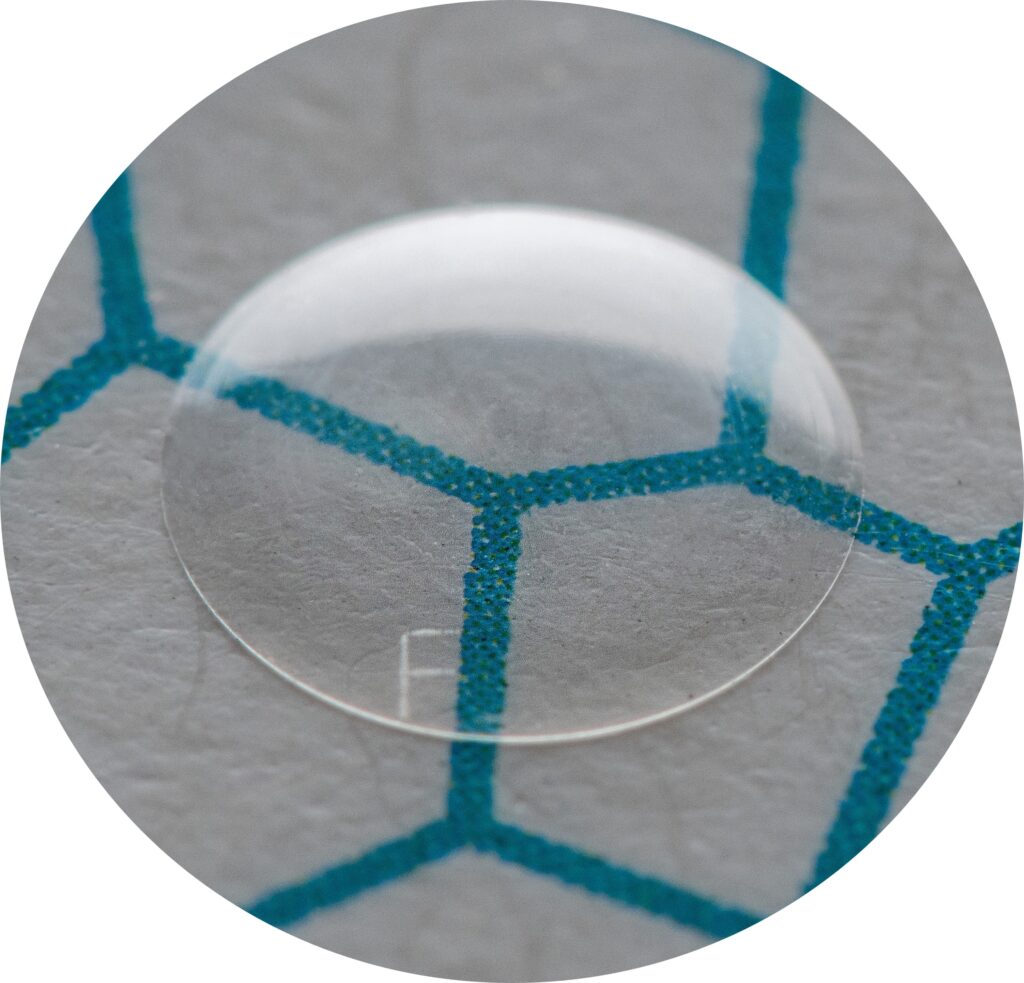Heidelberg, 28 May 2024, we are very pleased to announce the publication of our latest paper in Ophthalmology Science, titled Straylight of explanted Silicone Oil Samples to predict Emulsification.
Hammer M., Britz L., Schickhardt S., Munro D., Khoramnia R., Scheuerle A., Mayer C.S, Uhl P., Łabuz G. & Auffarth G.U., Straylight of explanted Silicone Oil Samples to predict Emulsification, Ophthalmology Science (2024), doi: https://doi.org/10.1016/j.xops.2024.100558.
Why study this?
Silicone oil is frequently used as an intraocular tamponade in vitreoretinal surgery due to its beneficial properties. However, one significant complication is its tendency to emulsify, which can lead to severe visual disturbances. Forward light scattering, or straylight, is a measure of optical disturbances and measuring it can help detect the early stages of the emulsification of silicone oil. Our study aimed to investigate the straylight properties of silicone oil samples explanted from patients and correlate these findings with clinical data to predict early emulsification.
What we did.
Under the guidance of Prof. Dr. med. Gerd Auffarth, our team conducted an in-depth study involving silicone oil samples from 37 eyes of 37 patients. The explanted silicone oil samples were tested for straylight using a custom-adapted C-Quant device. We aimed to identify if straylight could serve as an early marker for silicone oil emulsification.
We measured straylight in two primary conditions:
Silicone oil aspirated directly from patients’ eyes was first compared with unused control silicone oil samples to establish a baseline. Additionally, patient data was screened for factors associated with increased emulsification risk, such as the presence of proliferative vitreoretinopathy (PVR) or giant retinal tears (GRT).
What we found.
While most samples showed no increase in forward light scattering, a subset of samples showed a greatly increased straylight. This was especially true for patients with already visible oil droplets in the anterior chamber indicating emulsification. Interestingly, specific indications like giant retinal tears and proliferative vitreoretinopathy, both known to accelerate the process of silicone oil emulsification, showed higher straylight values after similar duration of the intraocular use.

Our Conclusion
Our study suggests that increased intraocular straylight can serve as an early indicator of silicone oil emulsification, which may not be detectable through standard clinical examinations. This finding is crucial as it highlights the potential of straylight measurements to guide timely silicone oil removal, thus preventing further complications such as intraocular pressure spikes or glaucoma. We are currently planning a clinical study to now test our hypothesis in a clinical setting.
How to access our paper.
The publisher, Elsevier Inc. on behalf of American Academy of Ophthalmology, encourages sharing our research, and you can access our full paper through the following link: https://doi.org/10.1016/j.xops.2024.100558.
Please cite this article as: Hammer M., Britz L., Schickhardt S., Munro D., Khoramnia R., Scheuerle A., Mayer C.S, Uhl P., Łabuz G. & Auffarth G.U., Straylight of explanted Silicone Oil Samples to predict Emulsification, Ophthalmology Science (2024), doi: https://doi.org/10.1016/j.xops.2024.100558.
 Maximilian Hammer
Maximilian Hammer 
 A rare case of Calcification
A rare case of Calcification